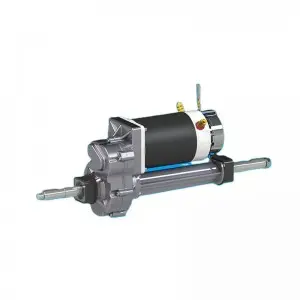If you own a vehicle with a manual transmission, it’s important to understand the potential problems it may face, one of which is a transaxle fluid leak. A manual transmission transaxle oil leak can cause a variety of problems if not addressed promptly. In this blog, we’ll explore the common signs and methods for identifying a transaxle fluid leak so you can take appropriate steps for a seamless driving experience.
Understanding transaxle fluid leaks:
Before diving into the identification process, it’s crucial to understand the basics of a transaxle fluid leak. A transaxle refers to a combined transmission and axle, typically found in front-wheel drive and some all-wheel drive vehicles. Transaxle oil is responsible for lubricating the transmission and axle components. Leaks occur when seals, gaskets, or other transmission components fail.
Eye exam:
A visual inspection is the easiest way to identify a transaxle fluid leak. First park the vehicle on level ground, engage the parking brake, and then turn off the engine. Grab a flashlight and inspect the area underneath the vehicle, paying close attention to the transmission housing, axles, and the connection between the transmission and the engine. Look for wet spots, drips or puddles. Transaxle fluid usually has a reddish color, which makes it easier to distinguish it from other fluids like engine oil or coolant.
Check for unusual odors:
Transaxle fluid has a distinctive odor that is often described as sweet and burnt. If you notice a pungent odor near the vehicle or when standing near the engine, it may indicate a transaxle fluid leak. Keep in mind that the intensity of odors can vary, so trust your sense of smell to detect any abnormalities. Be wary of any burning smell as it could damage your transmission components.
Monitor liquid level:
Another effective way to identify a transaxle fluid leak is to monitor the fluid level regularly. Locate the transmission dipstick (usually marked with a brightly colored handle) and pull it out. Wipe the dipstick with a clean cloth and reinsert it completely into the tube. Pull it out again and observe the fluid level. If the fluid level continues to drop without any apparent reason (such as regular use or scheduled maintenance), it may indicate a leak.
Other signs of a transaxle fluid leak:
In addition to visual, olfactory, and fluid level indicators, there are other signs that may indicate a transaxle fluid leak. If you notice difficulty shifting, a grinding sound when shifting, or a slipping clutch, it could be a sign that the fluid level is low due to a leak. These symptoms are usually caused by insufficient drivetrain lubrication, leading to increased friction and damage to various components.
Identifying a manual transmission transaxle fluid leak is critical to keeping your vehicle running well. Regular visual inspections, checking for unusual odors, monitoring fluid levels, and paying attention to other signs can help you identify and resolve problems promptly. Remember, neglecting to address a transaxle fluid leak can result in severe transmission damage, expensive repairs, and compromised driving safety. If you suspect a fluid leak, consult a professional mechanic to effectively diagnose and resolve the problem, ensuring a smooth, worry-free ride ahead.
Post time: Nov-13-2023


